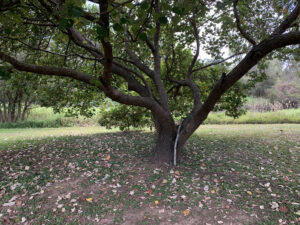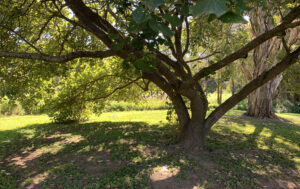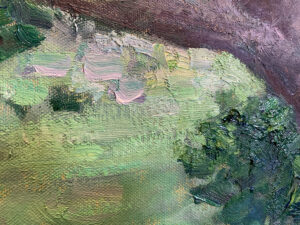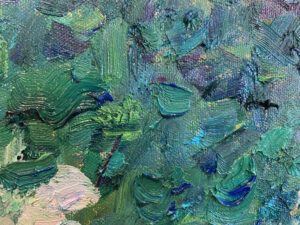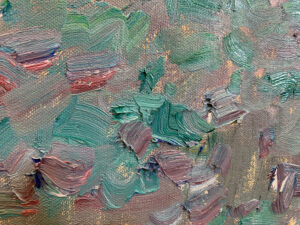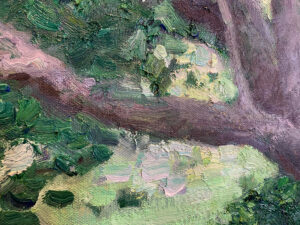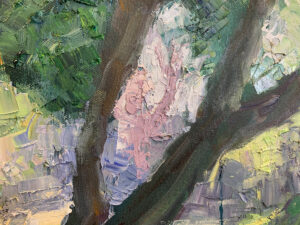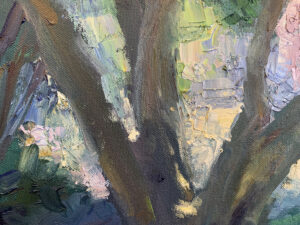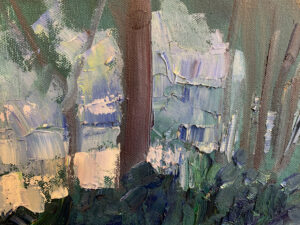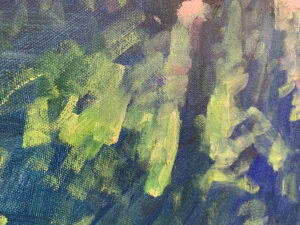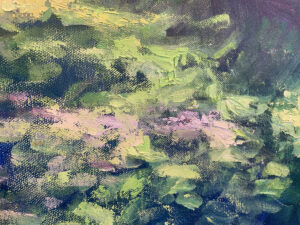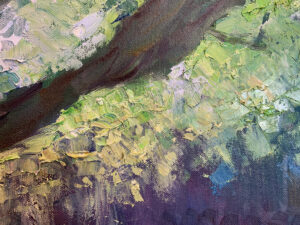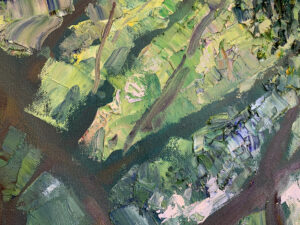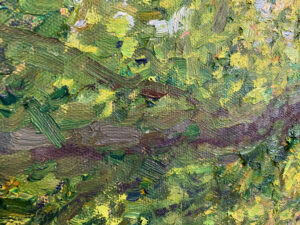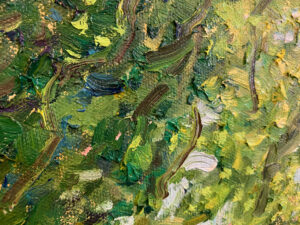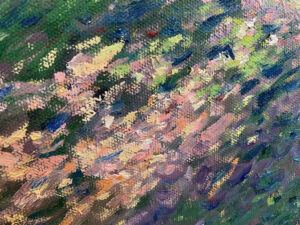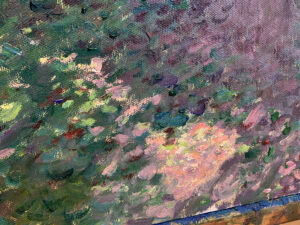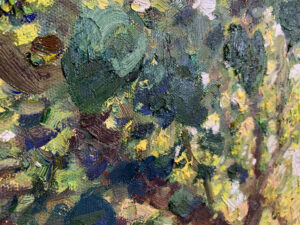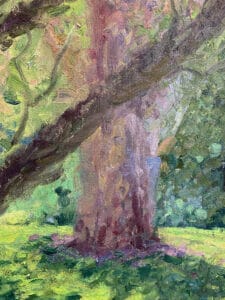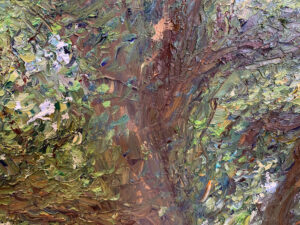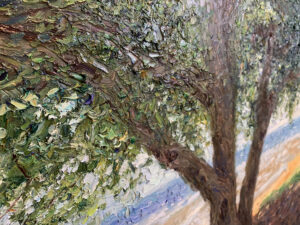This training report follows on from my Claude Monet spotlight published in September 2021. I was so inspired by Monet's work that I spent the last few months exploring his techniques and processes. Particularly the process of painting the same subject over and over again in varying conditions. Here are my findings.
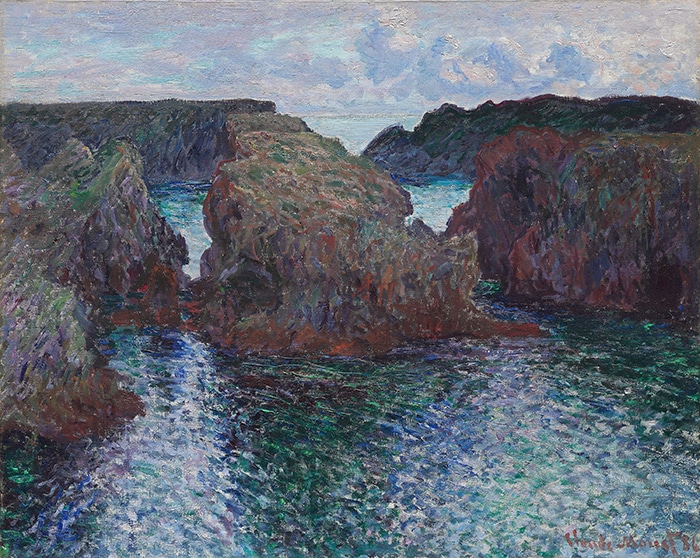
Same Subject, Different Conditions
One of Monet's defining processes was to paint the same subject over and over again under different conditions. The constant subject allowed him to carefully study the often subtle relationships between color and light.
I have been following in Monet's footsteps for the last two months. Every few days, I go for a run around a local park at Minnippi, Queensland. I take photos of the same few trees each time. I also make sure to go at varying times throughout the day and in varying conditions. These photos form the basis of my studies.
Of course, if I wanted to truly follow Monet's process, I would paint on location. But I prefer the comforts of my studio. I find it hard enough to stay organized in my studio, let alone in nature.
To date, I have produced four paintings in this tree series. The subject remains roughly constant—a feature tree with dappled light scattered across the grass. The conditions vary.
The first depicts late morning on a clear day. The colors are crisp and the contrast is sharp.
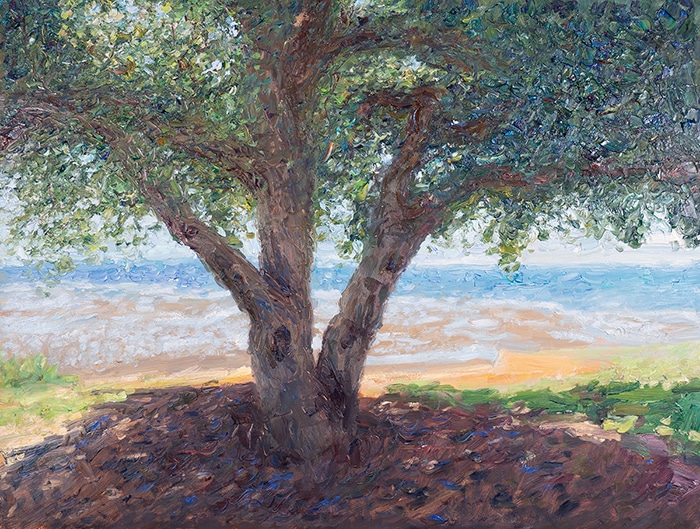
The second depicts the powerful midday sun. The lights are glaring and the shadows are deep.
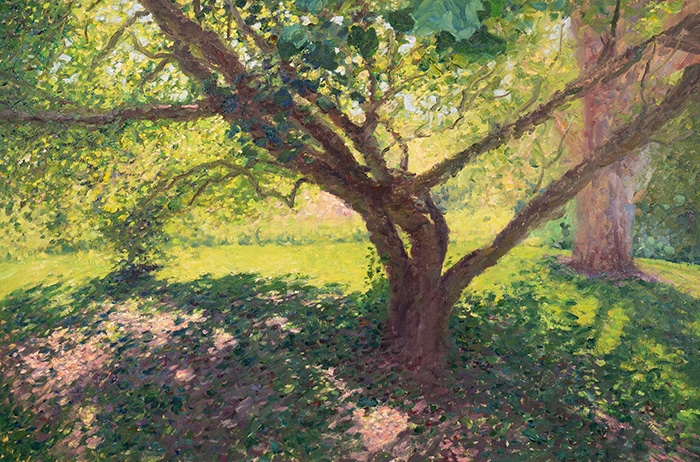
The third depicts a wet, overcast day. Pale greens dominate the painting. The scene is basked in a soft, cool light.
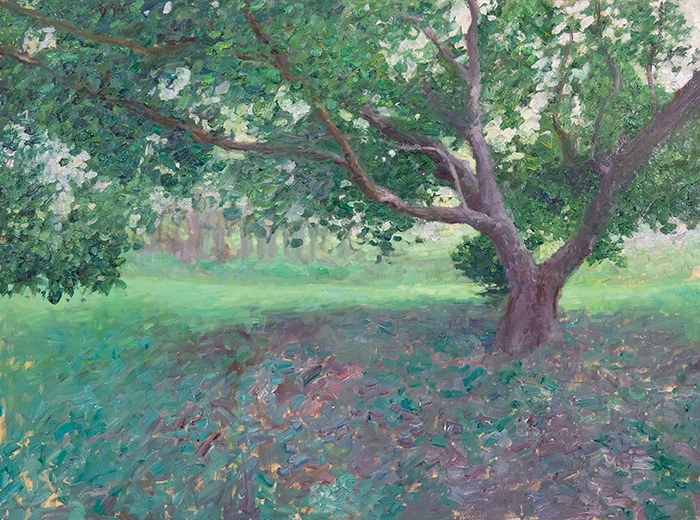
The fourth is the most striking painting. It depicts mid-afternoon on a sunny day, looking towards the light.
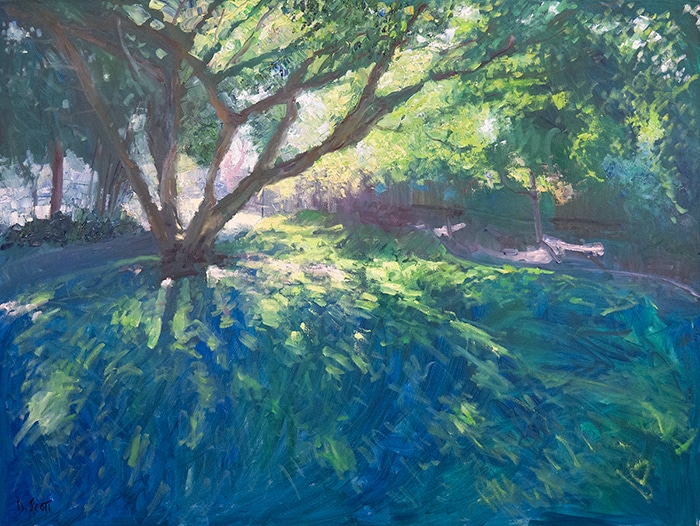
It's amazing how much the subject changes with the conditions. When you see the world like this, it's impossible to lack inspiration. Even the most simple of subjects can produce an infinite range of unique color combinations.
I suggest you try this exercise for yourself. Even if it is just a few small color studies of the same subject. Refer to this guide if you need a hand: How to Paint Under Different Types of Light.
You can see all my reference photos for this series so far below. Feel free to paint them if you like.
Broken Color Techniques
Broken color is a wonderful technique. Done well and your colors will vibrate and shimmer. It can transform even the most basic of subjects. Take Monet's haystack series for example.
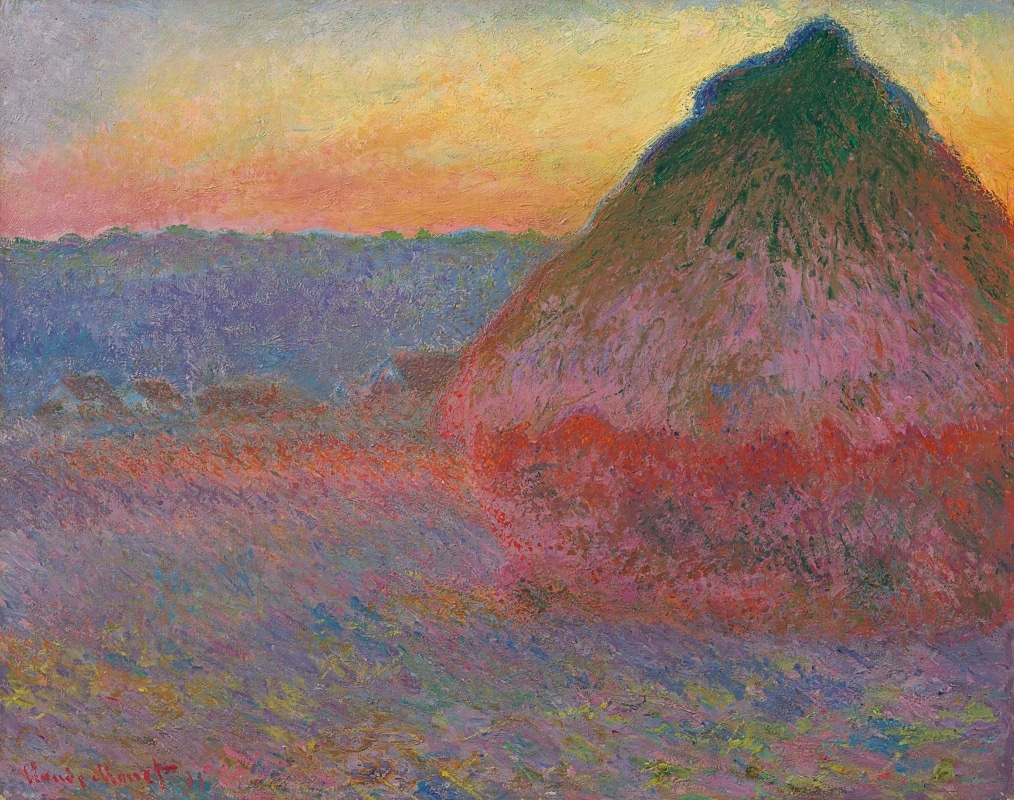
Let's take a look at some of the techniques you can use to convey broken color.
The Multicoloured Brush Strokes
How to perform: Pick up a few colors with your brush and leave them particularly unmixed. This will create a dynamic, multicoloured stroke. Make sure your brush is fully loaded.
Perfect for: Nature and capturing the illusion of detail with minimal effort.
Downsides: Hard to predict the outcome of each stroke; potential for muddy colors; and hard to fix mistakes.

The Multicoloured Palette Knife Strokes
How to perform: Pick up a few colors with your knife and leave them particularly unmixed. Make sure the knife is well loaded with paint before each stroke.
Perfect for: Crisp strokes; reworking; and scraping.
Downsides: Can have a blunt appearance and requires a lot of paint.
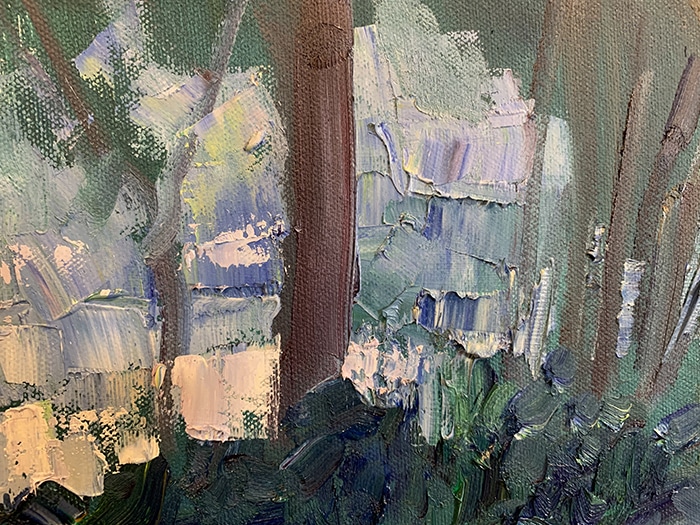
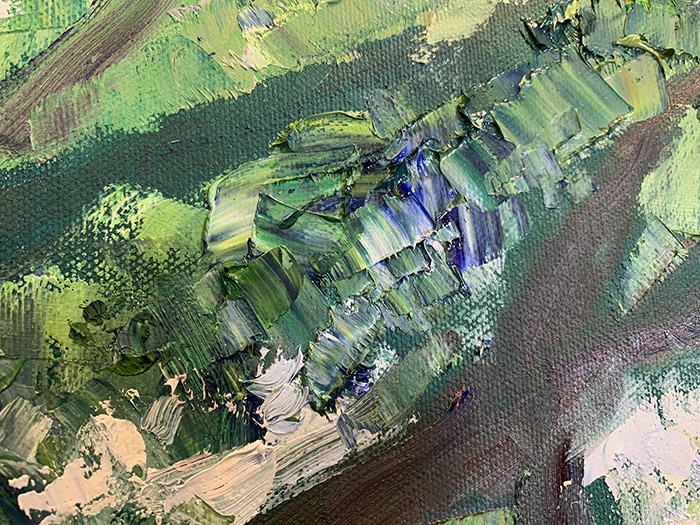
The Scumble
How to perform: Pick up a small amount of paint with a dry brush and gently “scumble” the color over the surface. Monet did this in many of his paintings. You can also perform this with a palette knife, though it requires more care.
Perfect for: Highlights and atmospheric effects.
Downsides: Only effective in the later stages of a painting and hard to fix mistakes.

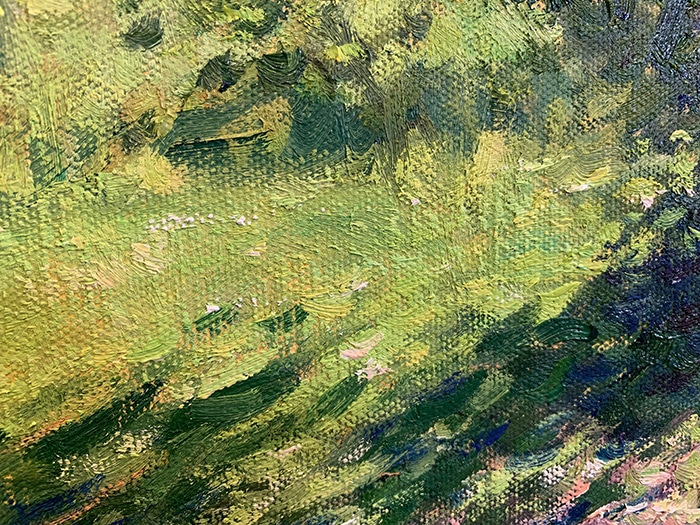
The Pointillist Approach
How to perform: Use a brush to apply small dabs of distinct color. You can use multicolored dabs for a more dramatic effect.
Perfect for: Optical color mixing; leaves and grass; easing the transition between different areas through the use of overlapping colors; and capturing the illusion of detail.
Downside: Comes at the expense of intricate drawing and fine rendering.
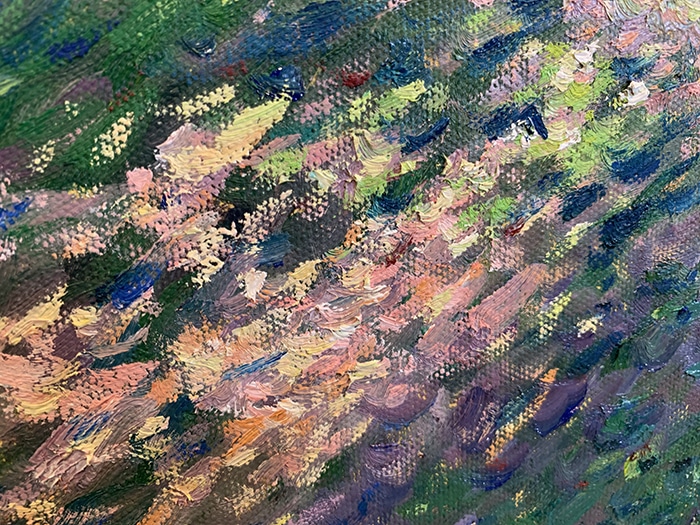
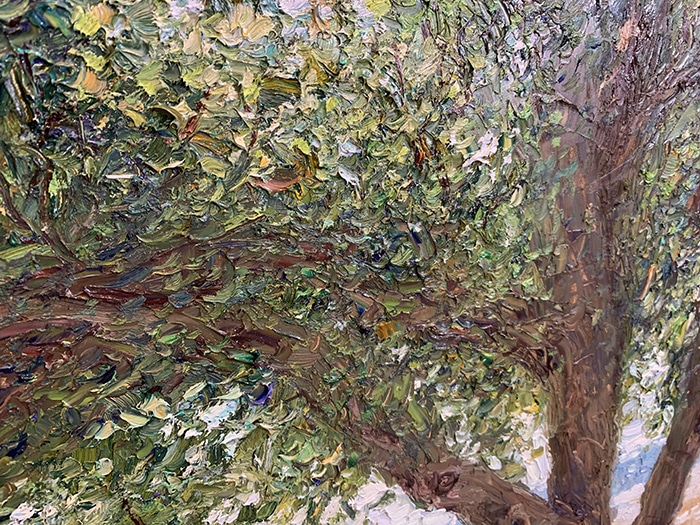
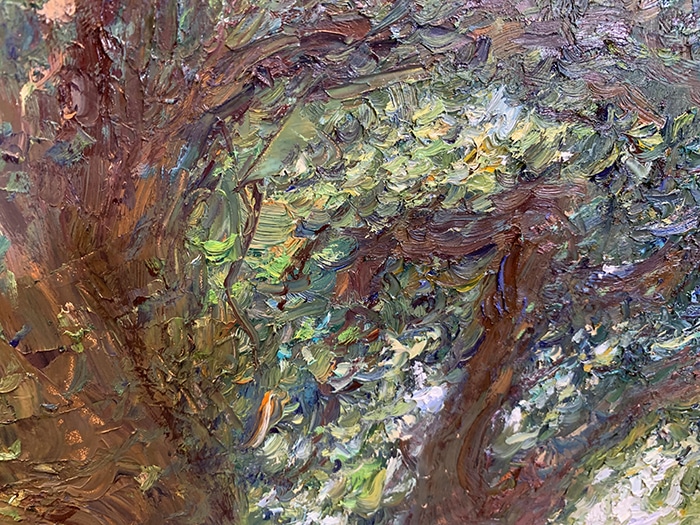
The Varied Approach
How to perform: Incorporate several of the above approaches together.
Perfect for: Large paintings that can accommodate a more varied approach.
Downside: Can make the painting appear disjointed.
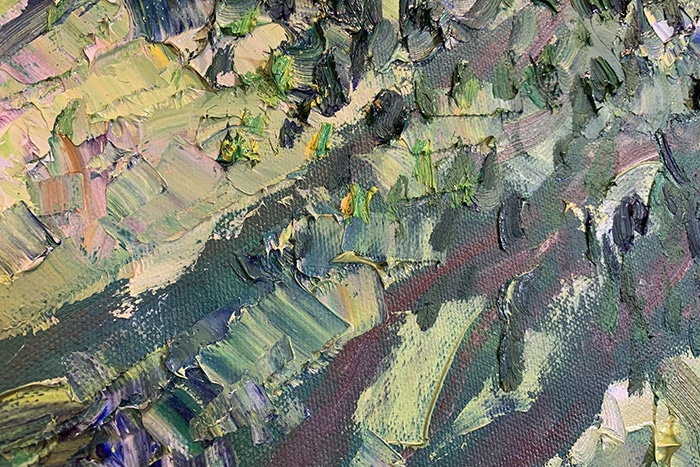
Below are some other closeups of my paintings showing broken color in action:
The Compromises of Impressionism
Impressionism is particularly effective for conveying color and life's fleeting effects. But painting with energetic strokes and dabs of broken color comes at the compromise of intricate drawing and fine rendering. Unfortunately, you cannot paint with the realism of John Singer Sargent AND the vibrancy of Claude Monet. There must be a trade-off.
Many of the Impressionists also departed with the use of black in favor of using greens, blues, and purples in the shadows. This produces more colorful works at the expense of deep shadows.
What if You Are NOT an Impressionist?
You don't need to be an Impressionist to learn from their ways. Their use of color and brushwork can be broadly applied to any style of painting. Say you are more of a realist painter. You could incorporate the Impressionist's broken color to make the background more interesting.
This goes for any style. Realists, Impressionists, and even abstract artists have much to learn from each other. Always keep an open mind with who you learn from. Many people tend to look down on art that is not like their own. But a more productive approach is to look for positives—things you can adopt in your own art.
I'm personally not a fan of most deep abstract art, but I can still learn from it. Particularly in relation to messaging, emotion, and ambience.
Impressionist Masters
Below are some of my favorite Impressionists:
- Sir Arthur Streeton
- John Russell
- Camille Pissarro
- Claude Monet
- Childe Hassam
- Mary Cassatt
- Berthe Morisot
- Alfred Sisley
- Édouard Manet
- Bato Dugarzhapov
- Peter Bezrukov
- Fred Cuming
Until next time, happy painting!
Dan Scott





